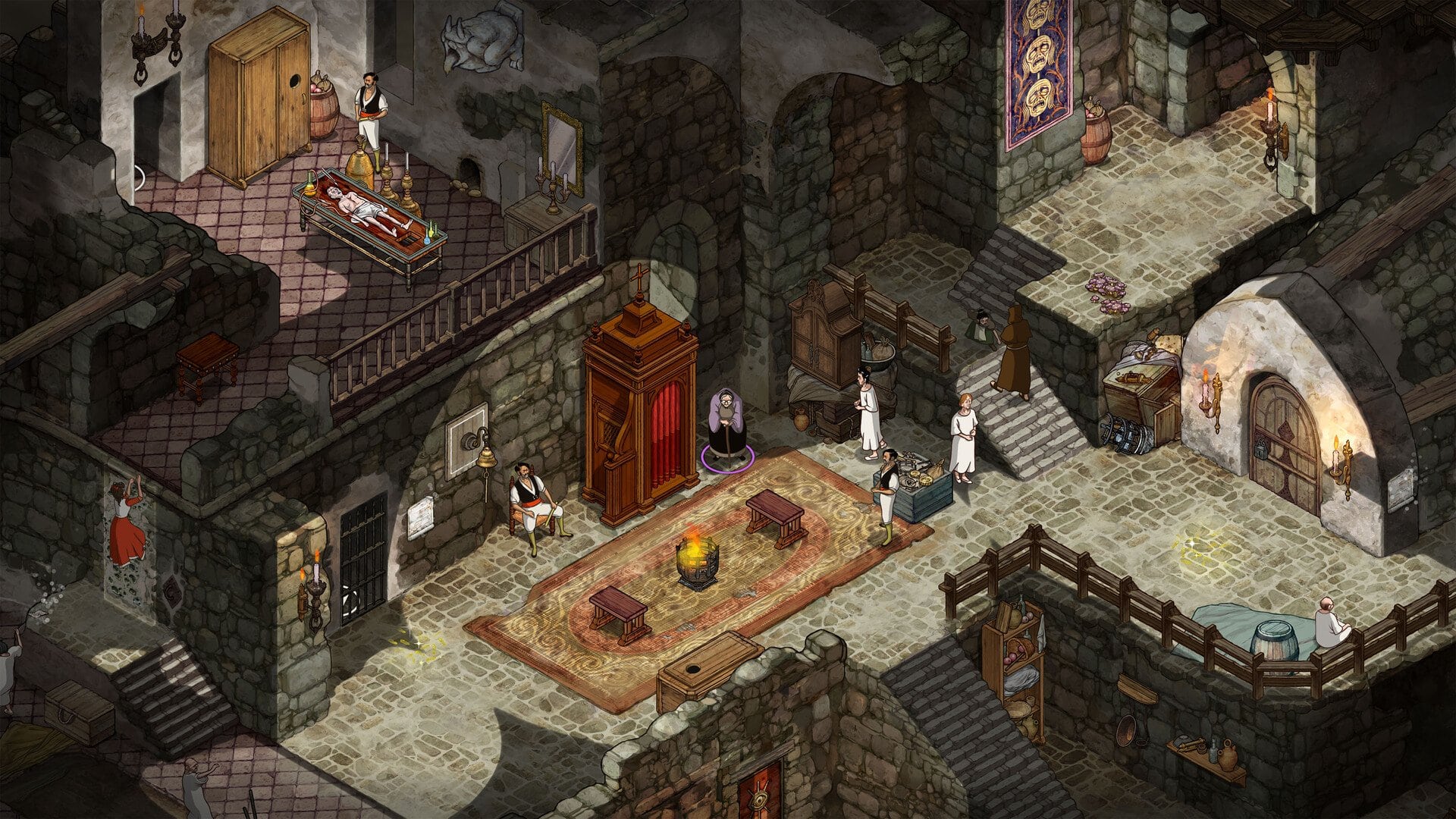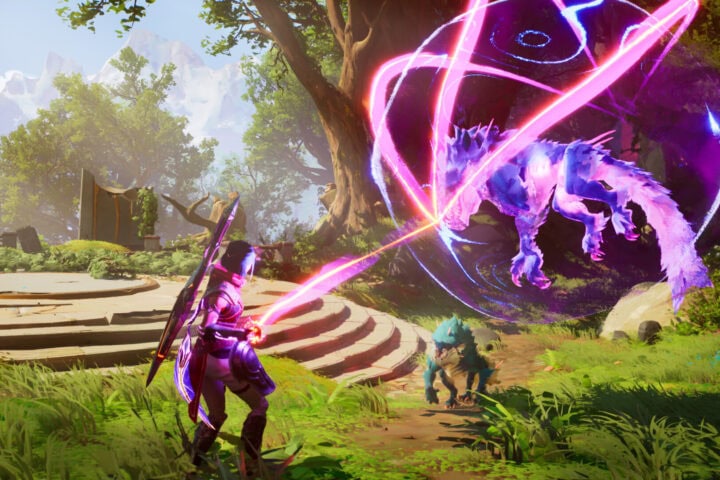With its motley crew of specialized characters and top-down view of crisscrossing enemy vision cones, The Stone of Madness resembles other stealth tactics games like Desperados III and Shadow Gambit: The Cursed Crew. But it’s not long before the developers at The Game Kitchen reveal a suite of inspired idiosyncrasies, and they do it by leaning into the desperation and disempowerment of the game’s imposing setting: an 18th-century Spanish monastery doubling as an insane asylum.
In The Stone of Madness, you control a group of inmates digging into the monastery’s dark secrets, ducking past baton-wielding guards, tattling friars, and even ghosts that materialize halfway through each time-limited day. At the start of a day, you select three of the five inmates to control, each one distinguished as much by their unique skills as by exceptional cartoon designs that suggest The Name of the Rose by way of Don Bluth. Alfredo, for example, carries an oil lamp that lets him investigate trails to find hidden objects, and he can don priestly robes to freely roam areas that other characters must sneak through. Amelia can set traps and, as she’s a child, slip between prison bars and into other narrow spaces, including tunnels.
Where other stealth tactics games are about coordinating intricate maneuvers, this one emphasizes the interplay of your group’s weaknesses. When inmates face their worst fears, their individual sanity meters start to drain, requiring you to scrutinize not just the interconnected environments but the makeup of your group. Eduardo, the hardy heavy-lifter, is terrified of the darkness, so he’s best accompanied by Alfredo and his lamp through the monastery’s myriad corridors. Violent and agile Leonora, though, fears the roaring fires that bring Eduardo peace of mind, and she should avoid dispatching guards near Alfredo, who abhors violence.
There are further restrictions beyond the sanity system: Only Alfredo and Leonora can read, while the elderly witch Agnes can’t climb ladders or ropes, and the mute Eduardo can’t converse with other characters. By imposing such an extensive system of checks and balances, The Stone of Madness vividly expresses the harshness of its setting.
Progress feels hard-won, the result of knife’s-edge tension fueled by the time your actions take; even the simple act of searching for supplies in a crate takes long enough to put a character at risk of being discovered. In particular, the three-character limit often leaves you without the inmate who might be more suited to a task, and you have to weigh the risk of pressing forward anyway against the benefit of coming back later with someone who has a more applicable skill set (there’s no changing the group’s composition until the day is over).
Sometimes that limit brings the pacing to a standstill, and there’s not much left to do but poke around for supplies to use during the nighttime intervals where you spend resources to craft items, acquire money, work toward skill upgrades, or recover health and sanity. As frustrating as it may be to hit such roadblocks, it also fits into the game’s bold embrace of failure. Constantly saving and reloading in the middle of a level is so integral to stealth tactics that Shadow Gambit went so far as to write it into the storyline, but The Stone of Madness has no such feature—it only saves automatically once the day is done, and you have to quit to the main menu if you want to restart the day from scratch. It’s a game that expects you to be detected or outright captured, and to work around those instances as best you can.
Characters are even treated differently upon being discovered: Alfredo gets the fewest chances before he’s thrown back in the cell, and gun-toting soldiers will chase after Amelia rather than open fire on her like the other inmates. Thus, it can be worthwhile for Eduardo to push a block into place even if he’s going to be caught right afterwards, or for Amelia to run interference. Sometimes the most valuable progress you’ll make is simply to unlock a door for another character to use later. In an impressive feat of adapting an established format for a unique setting, The Stone of Madness is cleverly attuned to perseverance through incremental progress.
Since 2001, we've brought you uncompromising, candid takes on the world of film, music, television, video games, theater, and more. Independently owned and operated publications like Slant have been hit hard in recent years, but we’re committed to keeping our content free and accessible—meaning no paywalls or fees.
If you like what we do, please consider subscribing to our Patreon or making a donation.



